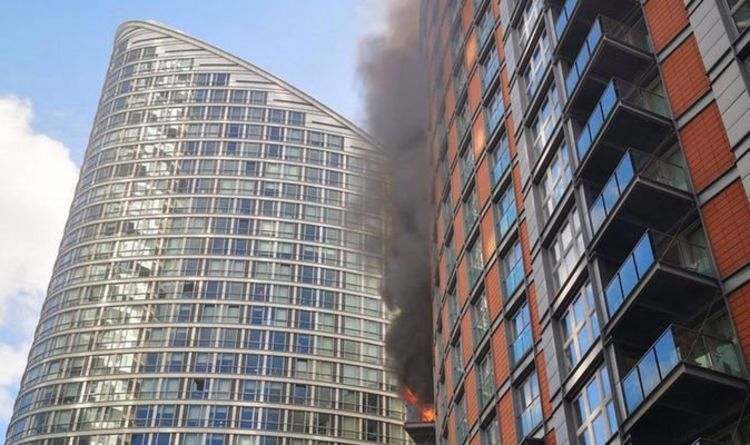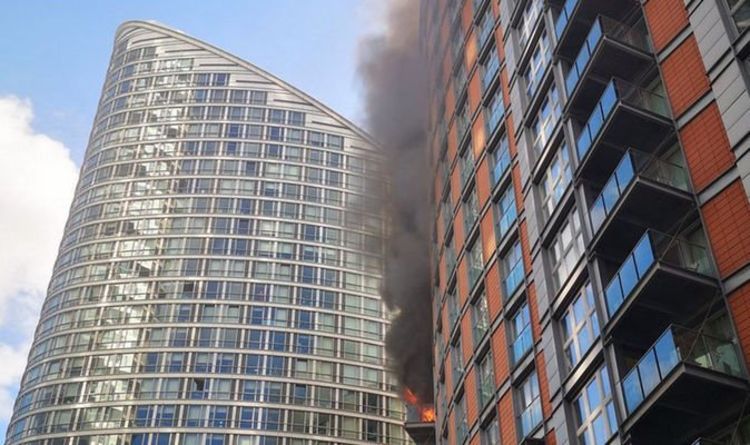
Mark up drawings in Onetrace's fire stopping software
Fire stopping software has come a very long way from where it used to be, and yet it hasn’t. Many...

Let one of our representatives take you around the system.

In early May, just weeks before the 4th anniversary of the deadly Grenfell Tower fire tragedy, another fire hit a London residential development building. The New Providence Wharf block in Poplar, completed in 2005 by a well known development company, erupted in chaos on the morning on May 7th as fire spread across three floors. There were no fatalities, however, one person was taken to hospital for smoke inhalation and another for minor burns. 35 people were examined on the scene by paramedics.
While the building had the ACM cladding, now known as “Grenfell-style cladding,” it was determined after initial investigations that it played no part in the fire, as it did not combust, cause or facilitate the fire. However, the preliminary report did not state how the fire spread. Further into the investigation by the London Fire Brigade, it was found that the timber decking used on the balconies is believed to have fuelled the fire’s journey from the eighth to eleventh floor.
The fire’s source has been traced to a fuse box in one of the eighth floor flats. Once the fire broke out and the occupants fled, the door had been left open, possibly due to an object jamming it, which allowed smoke to billow through the communal areas on that floor. Two automatic opening vents that should have opened upon detecting smoke failed, making safe evacuation and search and rescue more challenging. These automatic ventilation systems are supposed to extract smoke to allow occupants to evacuate safely and reduce the risk of fatal smoke inhalation.
While the building was constructed with both active and passive fire protection systems, they failed to work in the event of a fire, which could have been a fatal incident. Automatic fire doors failed to close, with London Fire Brigade deputy commissioner Richard Mills stating that the system’s failures could have led to a “potentially life threatening situation” had it not been for the exceptional actions of their firefighters and 999 control officers. Firefighters evacuated more than 20 people using smoke hoods, with one person being taken to hospital for smoke inhalation.
London Fire Brigade is still investigating if there were any breaches of fire safety regulations at the New Providence Wharf block, which is expected to take months to complete.
In the four years following the Grenfell Tower fire, there has not been enough change to the building safety culture that pushes for fire safety responsibility in high rise residential buildings. While there have been some changes in building safety regulations, some fire safety industry experts would argue that not enough is being done. Many buildings in the United Kingdom are still using the same cladding that combusted and spread the fire at Grenfell Tower.
With the push for tighter regulations and a requirement for third party accreditations getting stronger with every passing year, we at Onetrace have been working to support fire protection contractors to work more efficiently and in line with current accreditation standards. Using Onetrace active and passive fire protection app gets your business one step closer to those quality standards if used effectively. We have built these workflows into the very backbone of Onetrace, ensuring that your team can work towards these accreditations, and work much more efficiently should your company be accredited, reducing the amount of admin required in maintaining accreditations.
Fancy a quick peek? All you have to do is get in touch or request a demo. And if you’re not ready to commit, that’s okay; you can try Onetrace completely free for 14 days with zero obligation or commitment! We’re sure you’ll love it anyway!

Mark up drawings in Onetrace's fire stopping software
Fire stopping software has come a very long way from where it used to be, and yet it hasn’t. Many...

Why Onetrace is the best fire stopping app for contractors
Contractors are busy people and have massive responsibilities managing lots of moving parts for...

Losing Jobs? Your Current Traceability System May Be to Blame
Diagnosing why your business may be losing jobs or not hitting your sales targets can be quite a...